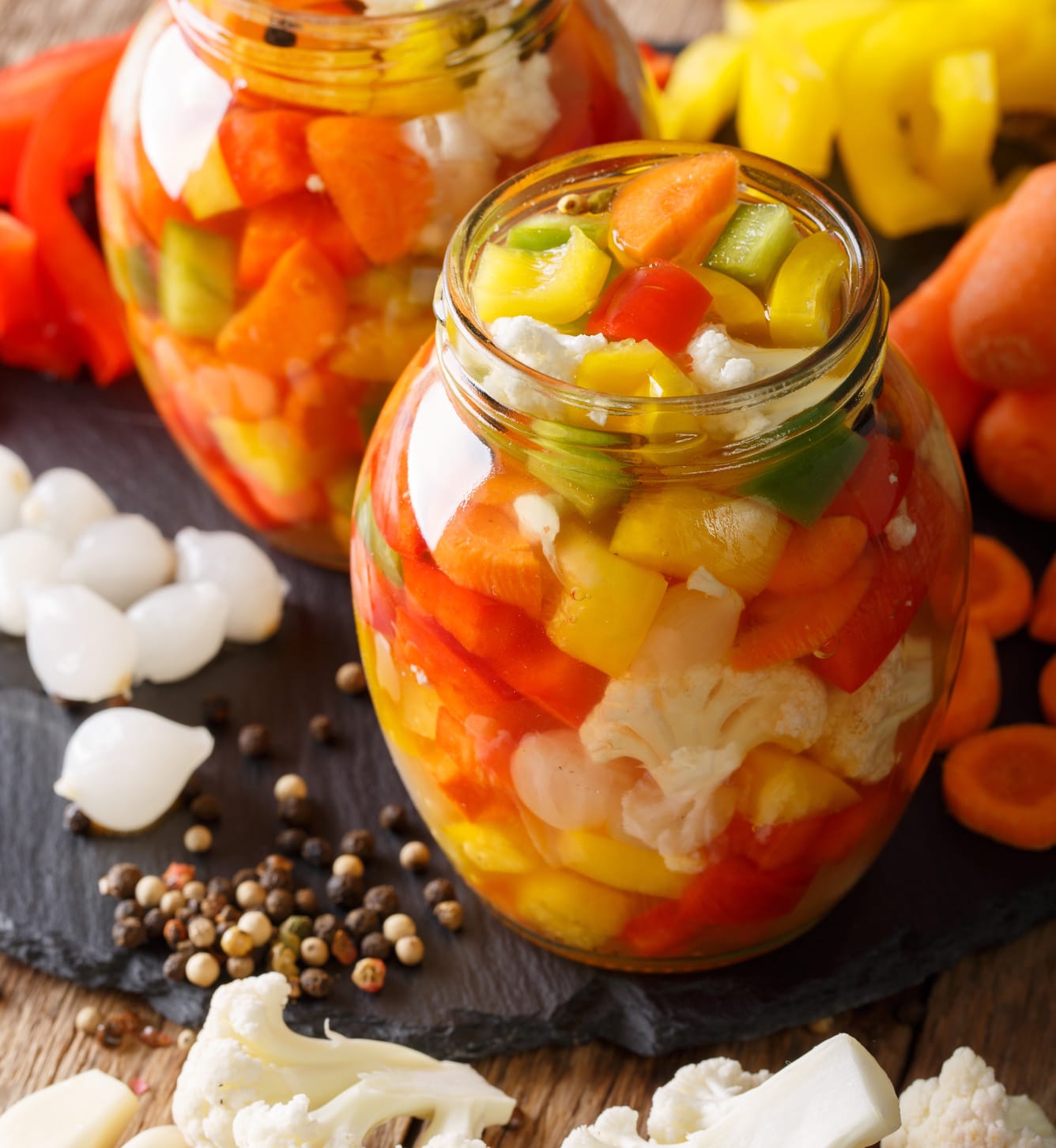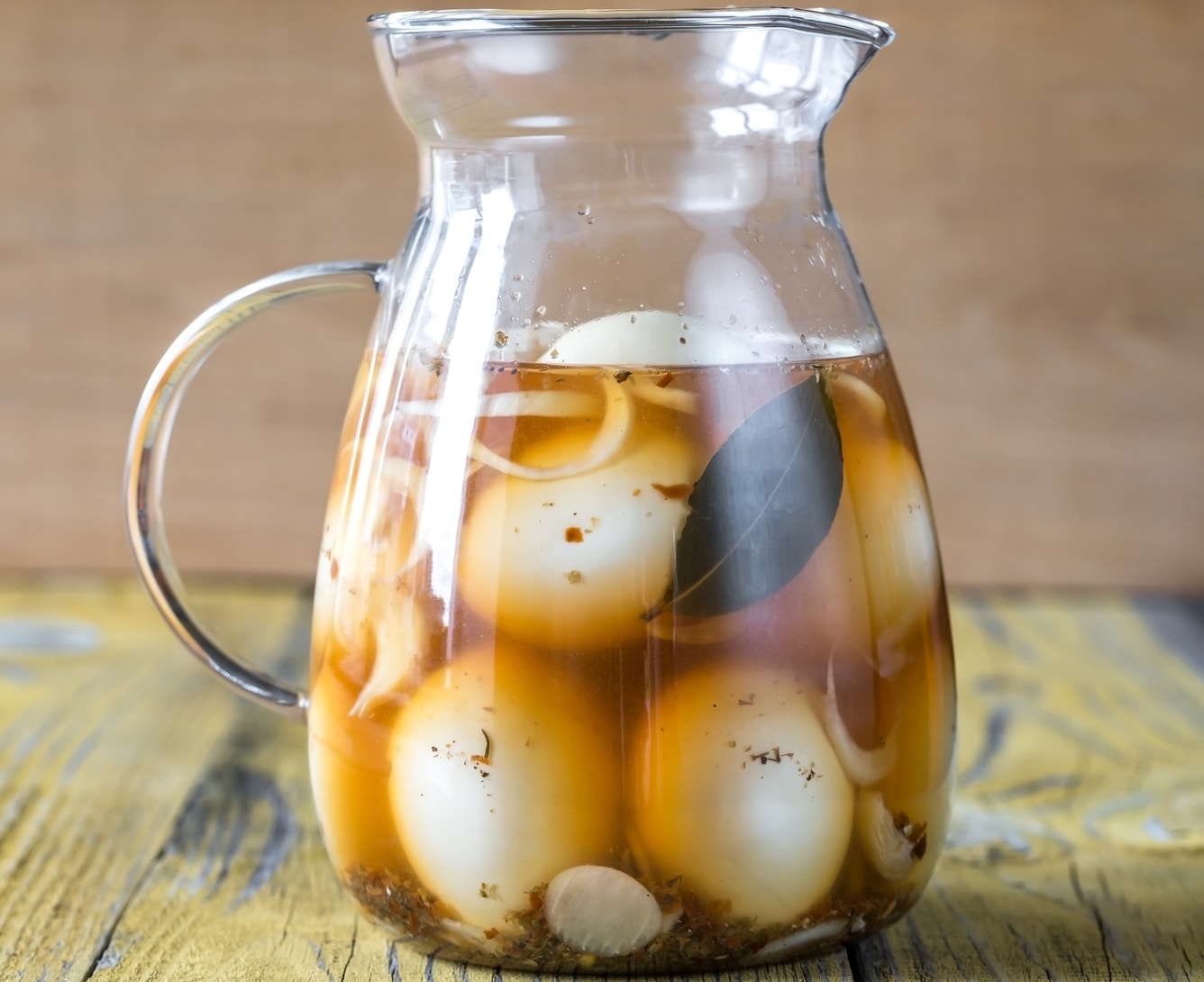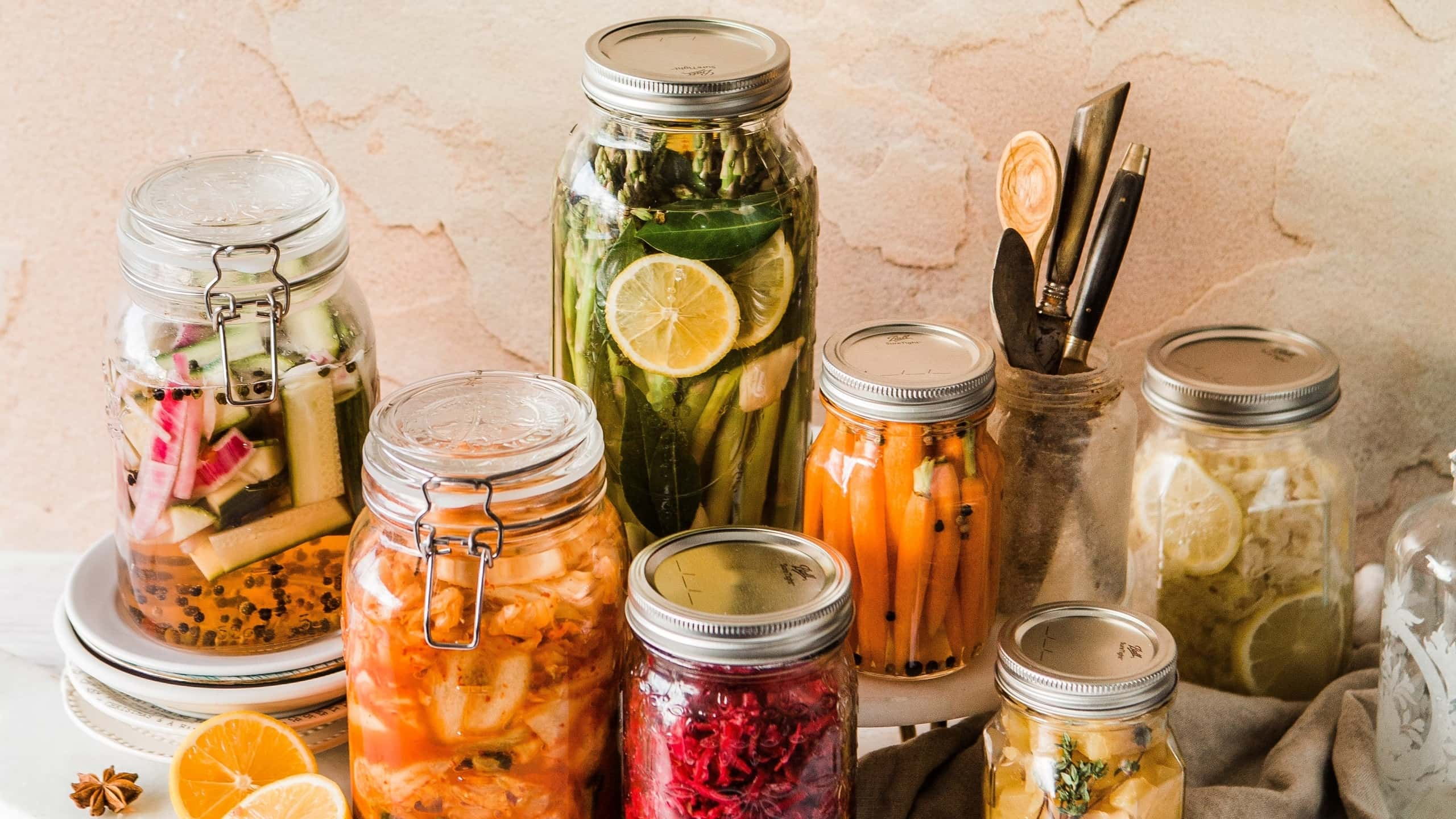Pickles and pickling, what about it?
Pickling, or the art of making pickles is rather old. It dates back to the old days of Mesopotamia, around 2,400 BC, and used to be a way to preserve perishable food for long trips or off-season consumption.
Nowadays, it is more of a delicacy, vastly enjoyed all over the world, than a way to preserve food. The transformation of fruits and vegetables into pickles gives them a very distinctive taste, but also new nutritional characteristics.
Much more than just cucumbers
When you think of pickles, what is the first image that comes to mind? Our guess goes to pickled cucumbers, be it sliced in a jar or even its “mini” version, the cornichons.
Despite the word “pickles” being commonly used to refer to this more “traditional” variety – the pickled cucumbers – there are many other possibilities for pickles. The most common foods used in pickling in Europe are vegetables as cucumbers, carrots, cauliflower, beets, tomatoes, peppers, onions and cocktail onions, garlic, capers, corn, or cabbage – like the famous sauerkraut, which is typical of German cuisine. In Asia it is also very common to use fruit in pickling such as mango, lemon, lime, papaya, pineapple, tamarinds or plums, in addition to the popular Korean kimchi, made of fermented cabbage, and Japanese gari, a pickled ginger side served with sushi.
Less common is the pickling of meat or fish. In the UK, it is common to pickle cockles, mussels, or boiled eggs. In Scandinavia, there is no one who hasn’t ever eaten pickled herring or salmon. In Latin America, it is common to eat ceviche that includes lime-pickled fish and chillies.
What happens in the pickling process?
Pickling basically consists of submerging raw or cooked foods in an acidic solution.
When submerged in vinegar – the most common method of pickling – food is preserved by the action of acetic acid present in vinegar, which confers acidity and eliminates microorganisms.
In pickling by the brine method, there is an additional step: anaerobic fermentation (without the presence of oxygen). Here, the star of the moment is lactic acid, produced by bacteria that feed on the natural sugars of food.
Preserved, tasty and healthy
Due to the presence of lactic acid, fermented pickles are rich in probiotics that facilitate digestion and keep gut bacteria in control. Furthermore, practically all pickled vegetables are low on calories.
Homemade pickling: how to make pickles at home
Despite the somewhat complicated name, pickling is quite an easy process to follow at home. Check theses recipes:

-
Pickled vegetables:
Ingredients:
Vegetables of choice: carrots, cucumbers, green chillies, red chillies, cocktail onions, garlic cloves, cauliflower, cherry tomatoes, peppers, red onions, etc.
- 0.5 l water or cider
- 0.5 l wine vinegar
- 1 tsp salt
- 2 tbsp sugar
- To taste: bay leaves, dill, mustard seeds, rosemary, lemon zest (optional)
- 1 tbsp pepper corn (optional)
Preparation:
- Cut the carrots and cucumbers into medium-thick slices. The cauliflower should be separated into florets. Peppers, red onions and chillies should be cut into strips. The garlic cloves and spring onions should be whole, peeled. The cherry tomatoes should be whole but pierced at the top. Wash them, pat dry and put them in a jar.
- Pour the water and vinegar in a pan, add salt, sugar, and condiments.
- Boil until the sugar dissolves completely and remove from heat.
- Pour the vinegar mix over the reserved vegetables. Close the jar tightly and turn it upside down, resting on the lid.
- Allow to cool completely and place in the refrigerator.
Keep the bottle with your homemade pickles in the fridge for a few days to get flavour. Then consume it within a week to ten days. Using two parts of vinegar for one part of water, will make the pickles last longer in the refrigerator.

-
English pickled eggs:
Ingredients:
- 6 eggs
- 0.4 l white wine vinegar
- 0.2 l water
- 100 g white sugar
- 2 bay leaves
- 1 tbsp black pepper
- 1 tbsp coriander seeds
Preparation:
- Cook the eggs in plenty of water and simmer for 10 minutes. Once cooked, transfer the eggs to a container with ice water.
- Pour the water and vinegar in a pan, add sugar, bay leaf, pepper and coriander seeds. Bring to a boil.
- While the water boils, peel the eggs carefully and place them in a large jar.
- When the sugar has completely dissolved and the vinegar mixture is boiling, remove from heat and immediately cover the eggs with this liquid.
- Close the jar tightly and allow to cool completely.
- Place the egg jar in a dark, cool place for a minimum of two weeks and up to three months. Once opened, consume in two weeks.
To add even more flavour to these pickled eggs, consider adding a chopped chili during the pickling. Serve your pickled eggs in salads or enjoy it as a starter or in a delicious sandwich.
